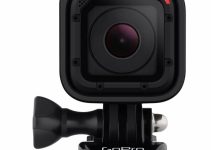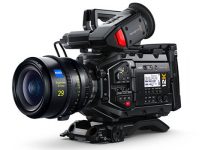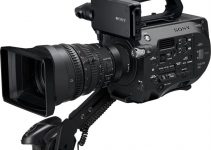Winter is here and now is the best time to upgrade your editing station. This could mean cleaning up a desk, organizing your data and getting fresh drives, or even building a new 4K video editing computer. We are going to focus on that last one today. Fortunately, every year computer components get cheaper and more powerful, so there really isn’t a bad time to start planning your next build.
Wedding filmmaker Matt Johnson of WhoisMatt wants to show off a budget build that he put together for only $750 – a steal for the power you get. Based around AMD Ryzen, it should have no problem handling your latest project in Premiere, DaVinci Resolve, or other software.
Keep in mind that this is a budget build. If you have the cash to spare and want to boost performance you can and should look into key upgrades. Now let’s check out Johnson’s parts!
Every build starts with the motherboard. It’s the piece that brings all your components together and is incredibly important even though it may be among the more affordable parts. Johnson chose the MSI B450-A PRO MAX.
It has a couple of things going for it. First, it balances features with the price. Second, it should support future AMD CPUs, giving you the opportunity to upgrade later.
Speaking of the CPU, or processor, we have the AMD Ryzen 5 3600. AMD has been killing it lately with their processors and are now very competitive with Intel, which most people are more familiar with.
They have turned into great picks and have amazing affordable options like the 3600. However, if you want to splurge you can get a notable performance boost with the AMD Ryzen 7 3700X as it adds a few cores that’ll seriously help with many NLEs.
Memory is a huge supporting factor here. The computer loads all your active programs and files into this and the more you have the smoother performance will be. It’s very important for heavy video files.
For this build, you’ll actually only need 16GB, and Johnson picked Corsair Vengeance LPX DDR4-3200 memory. It comes with two 8GB units, meaning when you can you should pick up another pair to get to a solid 32GB of RAM for solid performance. My advice is to get the 32GB (4x8GB) kit to start.
Storage is always a problem for video editing because you need both speed and capacity. That’s usually expensive. To start, you’ll want to computer’s core SSD, meaning the drive that’ll host the operating system and your apps.
The latest M.2 SSDs are actually very affordable, with a good system SSD choice being the Kingston A400 240GB M.2 SSD. It’s plenty for the OS and apps and is speedy. Want an upgrade? The Samsung 500GB 970 EVO M.2 SSD will be excellent.
One thing Johnson doesn’t go into is editing storage. You’ll likely want to stick to using external SSDs or RAID arrays to get your speed and flexibility. You can also opt for internal SSDs and drives if that’s how you want to roll. The case will support plenty of internal storage.
Now for the flashiest part: the graphics card. There has been a lot of movement in graphics cards lately. Everybody has a ton of amazing new, powerful cards out there and it’s exceptionally difficult to find one anywhere.
It’s unfortunate. Because of that Johnson’s pick today is actually a selection of multiple cards so you can hopefully find the best price or simply find something in stock.
The main thing to know is that there are plenty of reputable graphics cards vendors, (MSI, Gigabyte, EVGA, ASUS, ZOTAC, PNY, and some more) and as long as it is made by one of them you can feel safe picking up a card.
The other thing to note is that there are plenty of variations of each card. To be honest, the exact model doesn’t matter all that much in the budget range as the differences are only slight changes to clock speeds or the cooling systems—nothing life changing.
Anyway, here’s the list of card types you should be on the lookout for:
- NVIDIA GeForce GTX 1050 Ti (Cheapest, but limited video memory)
- NVIDIA GeForce GTX 1660 SUPER
- NVIDIA GeForce RTX 3060 Ti
- AMD Radeon RX 570
- AMD Radeon RX 580
- AMD Radeon RX 5500 XT
- AMD Radeon RX 5600 XT (Make sure you are getting 8GB models)
That’s a good selection, and the higher numbers are going to do a lot better job. Ideally, my pick from here would be either the NVIDIA RTX 3060 Ti or AMD RX 5600 XT. Both are incredibly powerful for their price.
Keeping all this powered up will need a decent power supply. Fortunately, that’s an easy enough part to find. The EVGA W1 500W 80 PLUS Power Supply will do just fine.
It’s not modular so cable management won’t be as fun, but it is cheap. For a semi-modular option there is the EVGA 500 BQ 500W Power Supply.
Now to hold everything is the case. A simple option like the NZXT H510 is good. No fancy lighting, but it is clean and looks great. The only potential issue is if you really wanted a disc drive in your computer, but I’m not sure that’ll be a breaking point for most.
Don’t forget your regular accessories! Keyboards and a mouse and speakers are all personal choices, so no super specific recommendations here.
Anything you would switch out in this build? Or anything you want more clarity on?
[source: Matt WhoisMatt Johnson]
Disclaimer: As an Amazon Associate partner and participant in B&H and Adorama Affiliate programmes, we earn a small comission from each purchase made through the affiliate links listed above at no additional cost to you.




